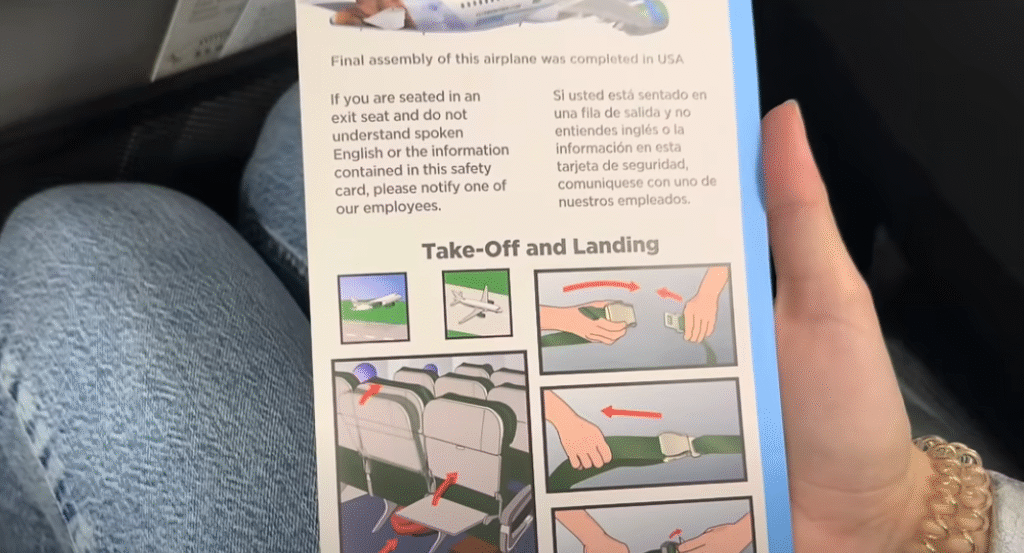Airports are exciting places: full of movement, culture, and the buzz of people heading to new destinations. But for language learners, airports also offer something else—an incredible opportunity to learn English in a real-world setting.
Today’s lesson doesn’t come from a classroom or textbook. Instead, imagine this: you’re at a major international airport. Maybe you’ve just landed in New York, London, Toronto, or Sydney. You’re surrounded by English speakers, airport signs, announcements, and conversations. Everything around you becomes part of the lesson.
Let’s dive into how you can turn your time at the airport into an immersive English learning experience.

1. Learning from Signs and Symbols
Airports are full of clear, concise English used to guide travelers. As you walk around, pay close attention to the signs.
Common airport signs:
- Departures / Arrivals – Departures is where you check in to leave, and Arrivals is where passengers come in.
- Baggage Claim – The area where arriving passengers pick up their checked luggage.
- Customs – Where your passport is checked and your luggage may be inspected.
- Restrooms / Toilets – Both terms are commonly used in English-speaking countries.
- Check-in / Security / Gate – These are key words in any traveler’s vocabulary.
Signs in airports are written in simple English, often with accompanying icons. This helps reinforce vocabulary and comprehension naturally.
Language tip: Write down any unfamiliar words you see on signs and look them up later. Try to guess their meaning using context and symbols.

2. Listen to the Announcements
Most airports regularly announce boarding times, gate changes, and flight updates in English.
Example announcement:
“Attention passengers on flight 492 to Los Angeles. Boarding will begin shortly at Gate 22. Please have your boarding passes ready.”
Here, you learn:
- Attention – A polite way to ask people to listen.
- Passengers – People who are traveling on a plane.
- Boarding – The process of getting on the plane.
- Gate – Where your plane is parked and where you go to board.
Try to listen carefully to the announcements. Even if you don’t catch every word, over time, you’ll begin to understand common phrases.
Listening exercise: Repeat the announcements in your head. Try to say them out loud if you’re alone or practicing quietly.

3. Useful Phrases for Speaking with Staff
If you’re traveling through an English-speaking airport, you’ll likely need to ask questions or respond to staff. Here are some common situations and helpful phrases:
At the check-in desk:
- “I’d like to check in, please.”
- “I have one bag to check.”
- “Can I have a window seat, please?”
At security:
- “Do I need to take off my shoes?”
- “Is this allowed in my carry-on?”
At immigration or passport control:
- “I’m here on vacation.”
- “I’m staying for two weeks.”
- “Here is my return ticket.”
At the gate:
- “Is the flight on time?”
- “Has boarding started?”
Language tip: Use polite expressions like “please” and “thank you” often. It’s an essential part of English communication, especially in service situations.

4. Practice Small Talk with Fellow Travelers
Airports bring people together from all over the world. If you feel comfortable, try making small talk with someone in line or at the gate.
Common small talk topics:
- “Where are you flying to?”
- “Is this your first time here?”
- “The airport is busy today, isn’t it?”
Even short conversations like this can help boost your confidence and improve your speaking skills. Don’t worry about making mistakes—most people will appreciate your effort to speak in English.
5. Read Real-Life English Materials
Airports are full of written English. Use this opportunity to read real materials, such as:
- Flight schedules and departure boards
- Menus at airport cafés
- Magazines and newspapers in waiting areas
- Safety instructions on the plane
- Receipts and signs in airport stores
These reading materials often use practical, everyday vocabulary. Try to read actively: underline words in your mind, make mental notes, or jot them down in a notebook.
Reading challenge: Order a coffee or snack and read the menu entirely in English. Try to order using a complete English sentence like, “I’d like a cappuccino and a croissant, please.”

6. Learning from Real Situations
One of the best things about airports is that they provide “learning by doing.” You aren’t just reading about English or listening to recordings—you’re using it in real situations.
For example:
- Lost baggage? You’ll practice explaining the situation to a staff member.
- Connecting flight changed? You’ll listen carefully to understand where to go.
- Need directions? You’ll have to ask clearly and listen carefully to the response.
Real-life challenges often force us to use our language skills creatively and quickly. Don’t be afraid of making mistakes—every mistake is a chance to learn.

7. Writing Practice on the Go
While waiting for your flight, take out a notebook or use your phone to practice writing.
Ideas for writing practice at the airport:
- Write about your travel experience so far.
- Describe what you see: people, stores, announcements.
- Make a list of new words you’ve seen or heard.
- Write a short story about where you’re going and why.
Sample journal entry:
“Today I arrived at JFK Airport in New York. It’s very big and busy. I checked in at Terminal 4, passed through security, and now I’m waiting at Gate 12. I heard an announcement about my flight. It’s on time. I’m excited for my trip!”
This not only improves your writing but helps reinforce vocabulary and sentence structure.
8. Review After the Journey
Once your airport adventure is over, take time to review what you learned.
- What new words or phrases did you hear?
- What conversations did you have in English?
- What signs or announcements did you understand?
Reflecting on your experience helps turn passive learning into active knowledge. Try reviewing your notes or writing a summary of your airport experience.
Final Thoughts
Airports may seem chaotic, but they’re also ideal places for language learning. With signs to read, announcements to hear, staff to talk to, and materials to explore, you can turn any airport into your personal English classroom.
Next time you travel, don’t just look at your phone or wait impatiently—take the chance to learn. Every gate, every sign, every short conversation can teach you something new. English is all around you. All you need to do is listen, observe, and take part.
Safe travels—and happy learning!
Teaching English at the Soccer Stadium! ⚽️ 🥅
Teaching English with random objects



